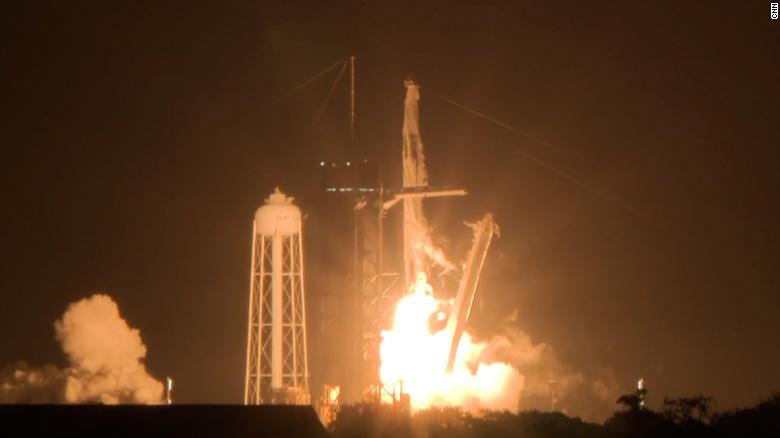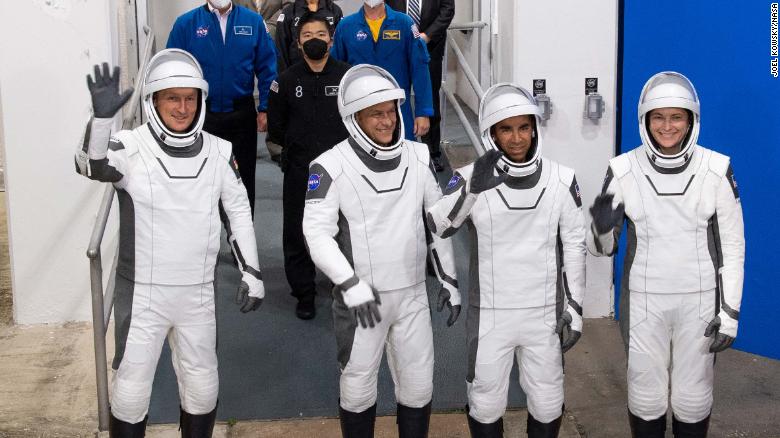SPACE X LAUNCHES FIFTH CREW TO SPACE

CNN:November 11, 2021
“It wasn’t until I had that experience of living and working beneath the surface of the ocean and made the connection to living and working in the vacuum of space and understanding the kind of team it took to do that successfully,” Barron told reporters last month. “All those parallels are what gave me the confidence to…apply [for NASA’s astronaut corps] in the first place.”
Raja Chari also joined NASA’s astronaut corps in 2017 as one of its newest inductees, and marks his first flight to space. He has a master’s degree in aeronautics and astronautics from MIT and graduated from the US Naval Test Pilot School, which has a long history of providing a pipeline to the astronaut corps.
Chari and Barron have also both been selected for NASA’s corps of Artemis astronauts, who could fly on future missions to the Moon. Barron added that taking a trip to the ISS is “the best possible training for us” to prepare for an eventual lunar mission, “in terms of personal development and the opportunity to learn from experienced people.”
It’s also the first time in space for Germany’s Matthias Maurer of the ESA, who’ll have the opportunity to conduct a spacewalk and activate a new robotic arm, which was recently transported to the space station aboard a Russian spacecraft.
“This arm will be able to bring science payloads through an Russian airlock from the inside of the station towards the outside, and then we [will be] able to run experiments on the outside without performing a spacewalk,” he said.
The mission’s pilot, NASA’s Tom Marshburn, is the sole veteran astronaut among the crew. He has a background in physics and holds a doctorate of medicine, and he first joined NASA in the early 1990s as a flight surgeon. He joined the official astronaut corps in 2004 and has previously flown on one Space Shuttle mission and one Russian Soyuz mission to the ISS.

When asked what he’s most looking forward to, Marshburn told reporters that “certainly one of the pinnacles of your time up on board is having the opportunity to do a spacewalk, but what we’re doing day to day in the laboratory is going to be what many of us look forward to the most.”
The ISS has for two decades hosted astronauts from all over the world to conduct scientific research. The space station is unlike any laboratory in the world — in the microgravity environment, physical and biological phenomena aren’t bogged down by the Earth’s pull. So, doing the same experiment on the station that’s been done on the ground can give scientists a better fundamental understanding of how something works.
The research the Crew-3 astronauts will oversee includes an attempt to grow a “perfect crystal” to enhance our understanding of biological processes, a test of the impact of diet on astronaut health, and the testing of a smartphone video guidance sensor for guidance, navigation, and control of the Astrobee free-flying robot.




